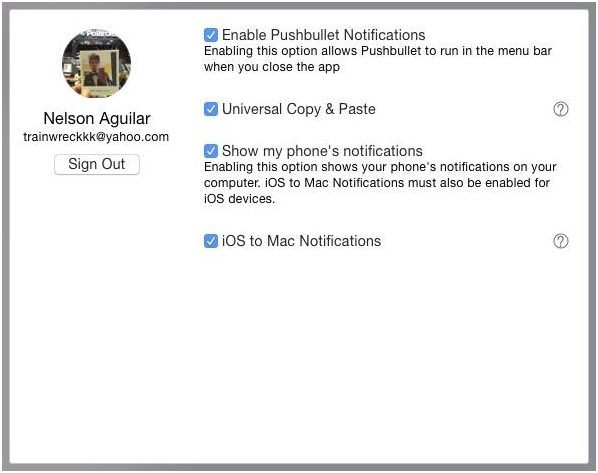

Last, the Settings tab gives you a few options such as your choice of Safari or Chrome for opening links and Apple Maps or Google Maps for opening addresses. Channels provides push notification feeds that you can subscribe to. Contacts displays a list of your paired devices, contacts and subscriptions. The main launch screen allows you to compose a message, add links, attachments or maps, and send it to another device you have set up Pushbullet on. Pushbullet for iPhone has four tabs: Pushbullet, Contacts, Channels and Settings. Notification settings can be configured for both stock and third-party apps. For instance, if you already receive mail notifications on your desktop, then you probably don't need Pushbullet pushing the same mail notifications from your iPhone. You can optimize your experience further by going into the Mac app's preferences and checking off specific apps that you would like to receive iOS notifications from. iOS and Mac apps are available alongside Safari, Chrome, Firefox and Opera extensions. Depending on which platforms or web browsers you want to send and receive links and files between, download the Pushbullet apps or extensions that you need and make sure that iOS to Mac notifications and universal copy and paste are enabled in each app's preferences. The process of setting up Pushbullet takes just a few minutes. Pushbullet is the marriage of AirDrop, Notifyr and other OS X Yosemite features in one package, but is it a worthwhile alternative? Find out our first impressions in our hands-on video ahead. Following the release of Pushbullet for iOS, Mac, and Safari, we have been testing out the new software to see how well it keeps notifications, links, photos and other files in sync between devices.


 0 kommentar(er)
0 kommentar(er)
